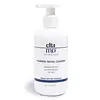What's inside
What's inside
 Key Ingredients
Key Ingredients

 Benefits
Benefits

 Concerns
Concerns

 Ingredients Side-by-side
Ingredients Side-by-side

Water
Skin ConditioningSodium Cocoyl Glycinate
CleansingAcrylates Copolymer
Methyl Perfluoroisobutyl Ether
SolventMethyl Perfluorobutyl Ether
SolventMagnesium Silicate
AbsorbentSodium Cocoyl Apple Amino Acids
Skin ConditioningBromelain
Skin ConditioningPEG/PPG-14/4 Dimethicone
EmulsifyingPolyhydroxystearic Acid
EmulsifyingIsononyl Isononanoate
EmollientEthylhexyl Isononanoate
EmollientSodium Cocamidopropyl Pg-Dimonium Chloride Phosphate
CleansingPhenoxyethanol
PreservativeSodium Hydroxide
BufferingCapryloyl Glycine
CleansingUndecylenoyl Glycine
CleansingSodium Bisulfite
AntioxidantPropylene Glycol
HumectantMaltodextrin
AbsorbentCoconut Acid
CleansingSodium Chloride
MaskingHexylene Glycol
EmulsifyingTetrasodium Glutamate Diacetate
Parfum
MaskingWater, Sodium Cocoyl Glycinate, Acrylates Copolymer, Methyl Perfluoroisobutyl Ether, Methyl Perfluorobutyl Ether, Magnesium Silicate, Sodium Cocoyl Apple Amino Acids, Bromelain, PEG/PPG-14/4 Dimethicone, Polyhydroxystearic Acid, Isononyl Isononanoate, Ethylhexyl Isononanoate, Sodium Cocamidopropyl Pg-Dimonium Chloride Phosphate, Phenoxyethanol, Sodium Hydroxide, Capryloyl Glycine, Undecylenoyl Glycine, Sodium Bisulfite, Propylene Glycol, Maltodextrin, Coconut Acid, Sodium Chloride, Hexylene Glycol, Tetrasodium Glutamate Diacetate, Parfum
Water
Skin ConditioningGlycerin
HumectantSodium Laureth Sulfate
CleansingCoco-Betaine
CleansingPolysorbate 20
EmulsifyingPEG-200 Glyceryl Stearate
PEG-7 Glyceryl Cocoate
EmulsifyingNiacinamide
SmoothingMannose
HumectantSodium Hydroxide
BufferingTrisodium Ethylenediamine Disuccinate
Vitreoscilla Ferment
Skin ConditioningButyrospermum Parkii Butter
Skin ConditioningGlycol Distearate
EmollientAcrylates Copolymer
Citric Acid
BufferingCocamide Mea
EmulsifyingPEG-55 Propylene Glycol Oleate
Pentylene Glycol
Skin ConditioningPolyquaternium-11
Propylene Glycol
HumectantSodium Chloride
MaskingSodium Benzoate
MaskingWater, Glycerin, Sodium Laureth Sulfate, Coco-Betaine, Polysorbate 20, PEG-200 Glyceryl Stearate, PEG-7 Glyceryl Cocoate, Niacinamide, Mannose, Sodium Hydroxide, Trisodium Ethylenediamine Disuccinate, Vitreoscilla Ferment, Butyrospermum Parkii Butter, Glycol Distearate, Acrylates Copolymer, Citric Acid, Cocamide Mea, PEG-55 Propylene Glycol Oleate, Pentylene Glycol, Polyquaternium-11, Propylene Glycol, Sodium Chloride, Sodium Benzoate
 Reviews
Reviews

Ingredients Explained
These ingredients are found in both products.
Ingredients higher up in an ingredient list are typically present in a larger amount.
Acrylates Copolymer is used as a film-forming agent and texture enhancer.
After applied, Acrylates Copolymer forms a thin film cover that helps skin feel more soft. It can help sunscreens become more water-resistant.
It is also used to make a product more thick.
Learn more about Acrylates CopolymerPropylene Glycol is an odorless, colorless liquid. As a humectant, it helps skin retain moisture. It also aids in delivering active ingredients.
Another role of this ingredient is preventing a product from melting or freezing. Propylene glycol also adds antimicrobrial properties to a product, elongating product lifespan.
This ingredient is considered an organic alcohol and commonly added into both cosmetics and foods.
Those with sensitive skin or conditions may develop a rash when using this ingredient.
Learn more about Propylene GlycolChances are, you eat sodium chloride every day. Sodium Chloride is also known as table salt.
This ingredient has many purposes in skincare: thickener, emulsifier, and exfoliator.
You'll most likely find this ingredient in cleansers where it is used to create a gel-like texture. As an emulsifier, it also prevents ingredients from separating.
There is much debate on whether this ingredient is comedogenic. The short answer - comedogenic ratings don't tell the whole story. Learn more about comegodenic ratings here.
The concensus about this ingredient causing acne seems to be divided. Research is needed to understand if this ingredient does cause acne.
Scrubs may use salt as the primary exfoliating ingredient.
Learn more about Sodium ChlorideSodium Hydroxide is also known as lye or caustic soda. It is used to adjust the pH of products; many ingredients require a specific pH to be effective.
In small amounts, sodium hydroxide is considered safe to use. However, large amounts may cause chemical burns due to its high alkaline.
Your skin has a natural pH and acid mantle. This acid mantle helps prevent harmful bacteria from breaking through. The acid mantle also helps keep your skin hydrated.
"Alkaline" refers to a high pH level. A low pH level would be considered acidic.
Learn more about Sodium HydroxideWater. It's the most common cosmetic ingredient of all. You'll usually see it at the top of ingredient lists, meaning that it makes up the largest part of the product.
So why is it so popular? Water most often acts as a solvent - this means that it helps dissolve other ingredients into the formulation.
You'll also recognize water as that liquid we all need to stay alive. If you see this, drink a glass of water. Stay hydrated!
Learn more about Water